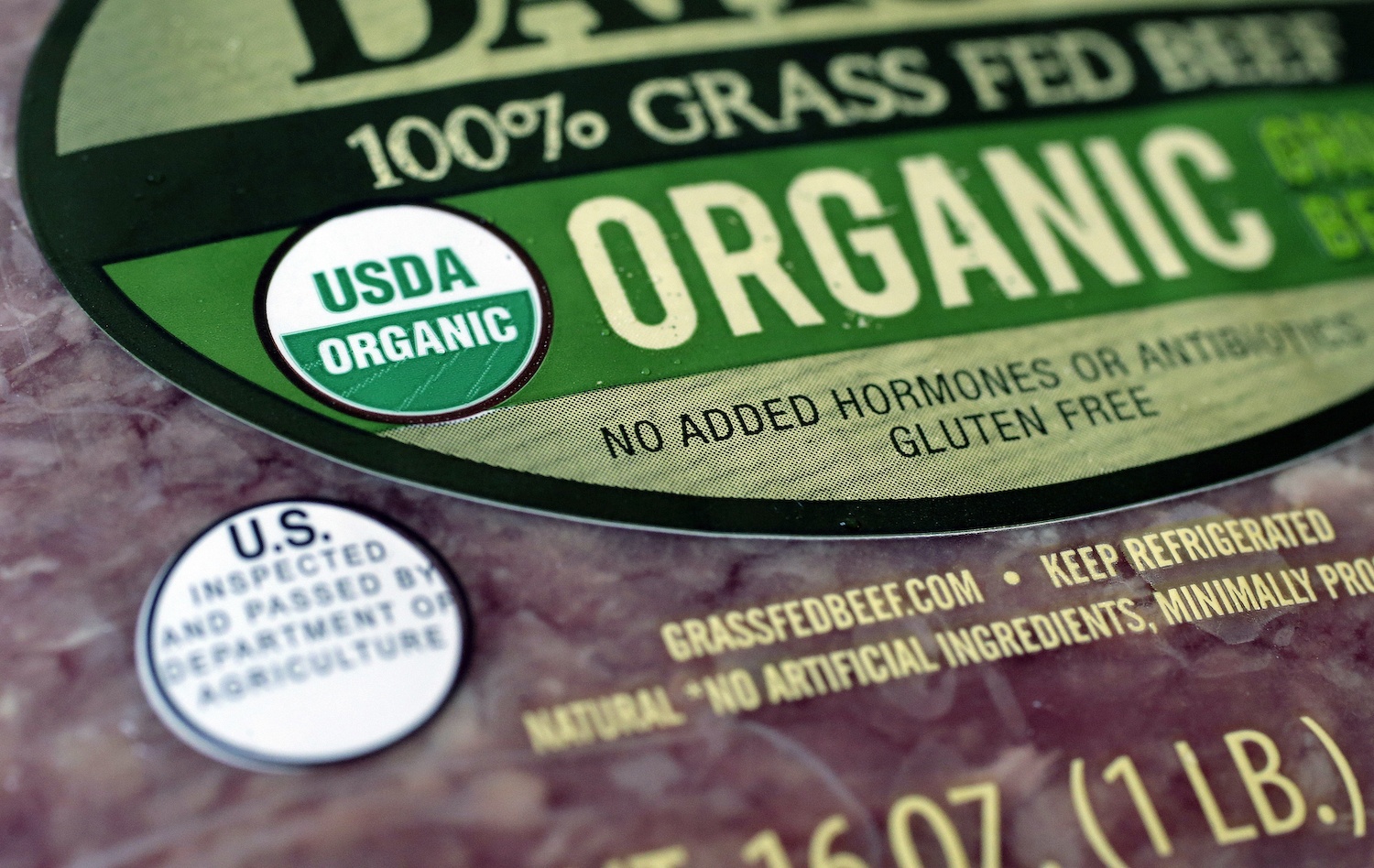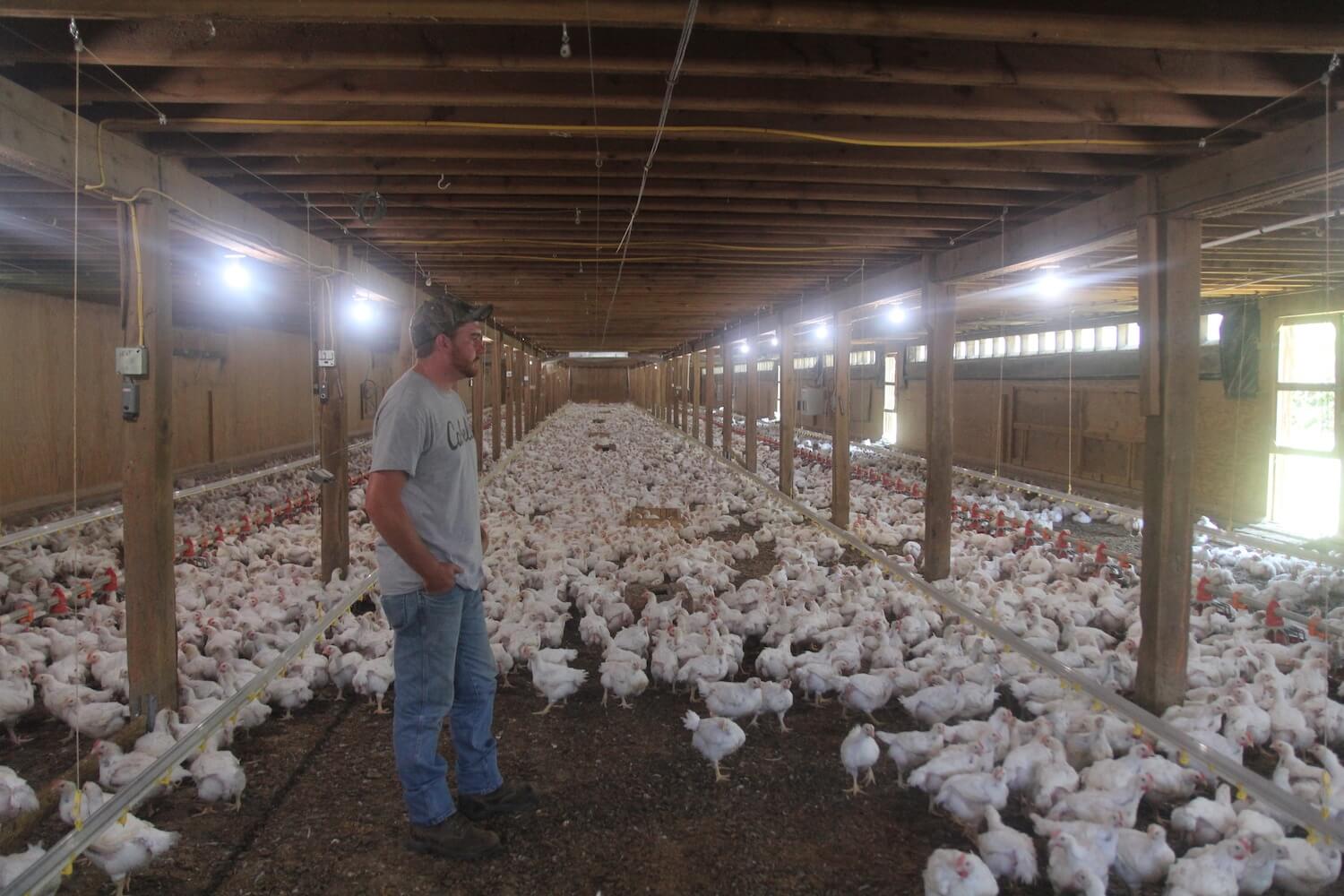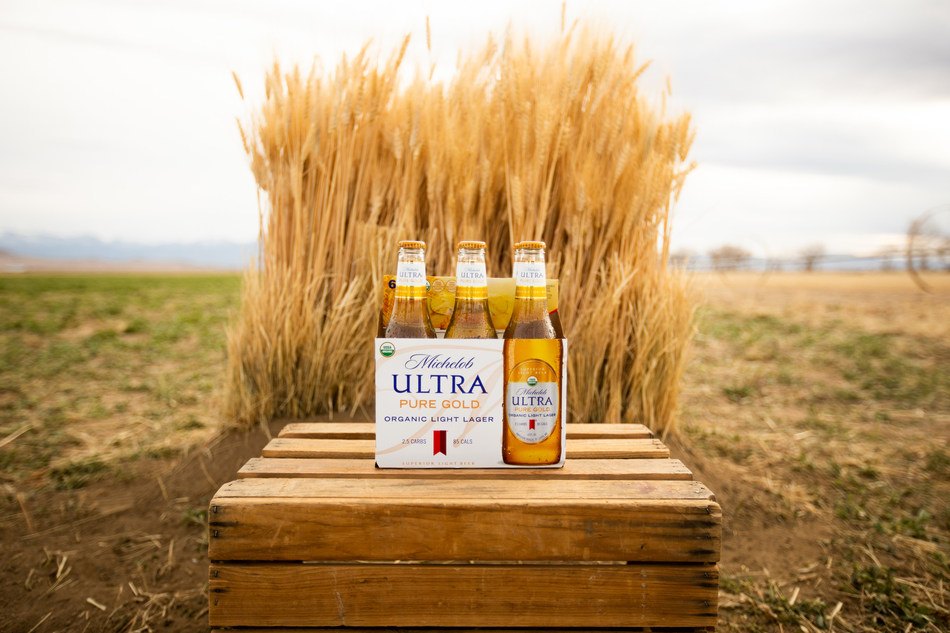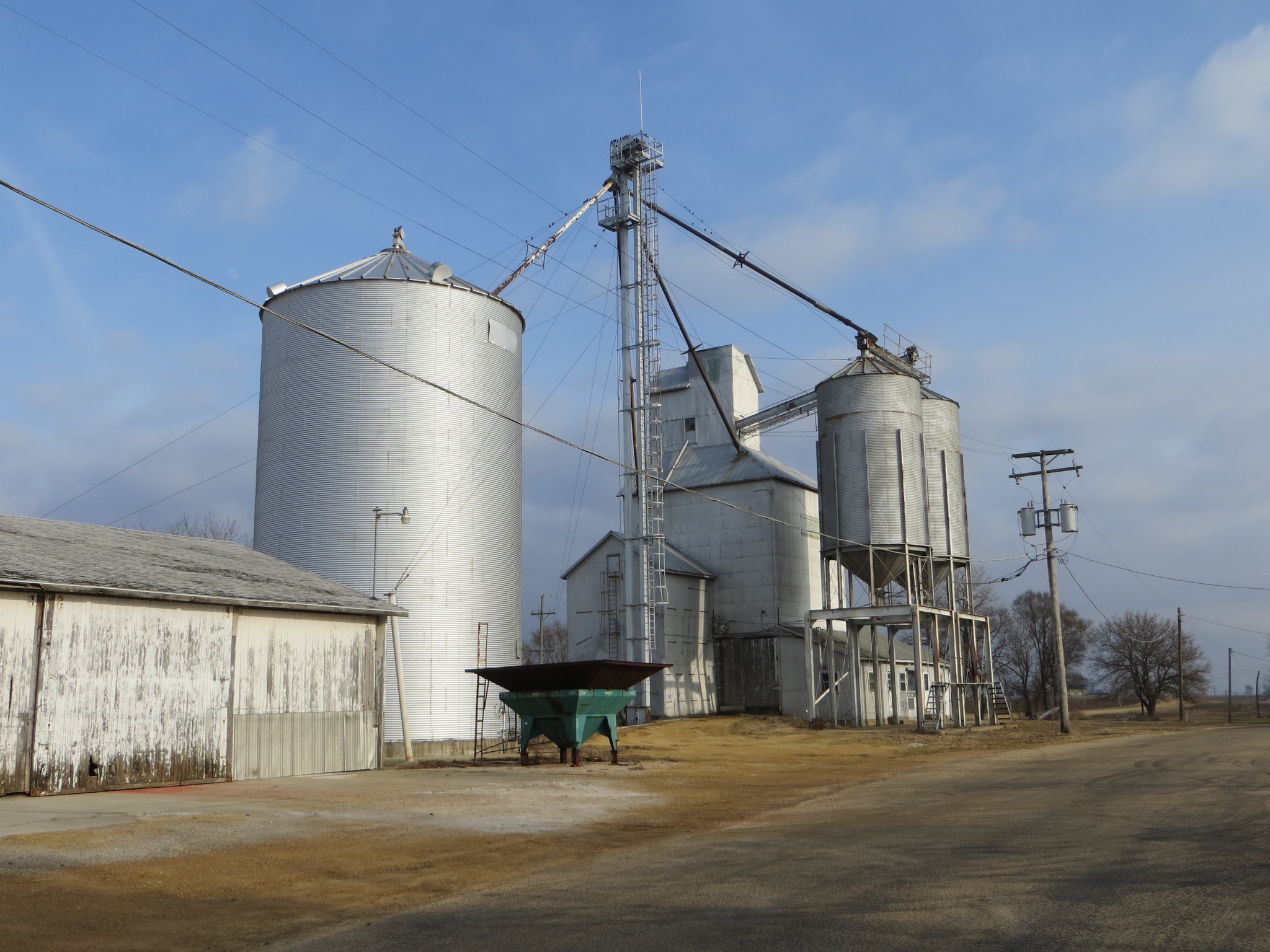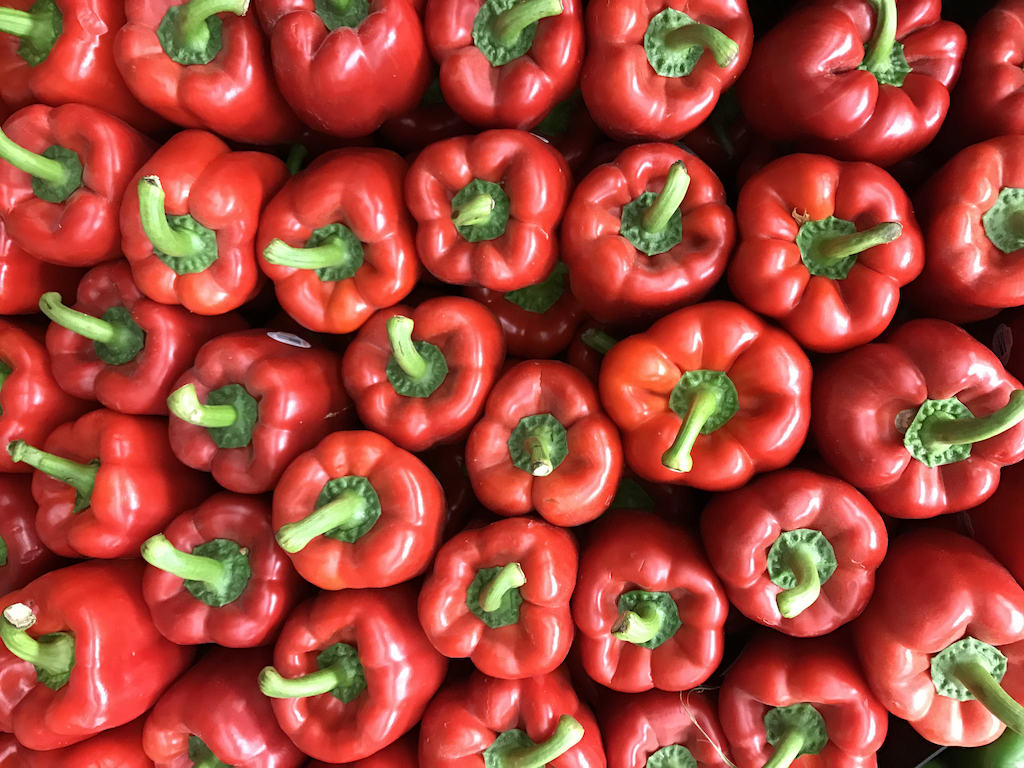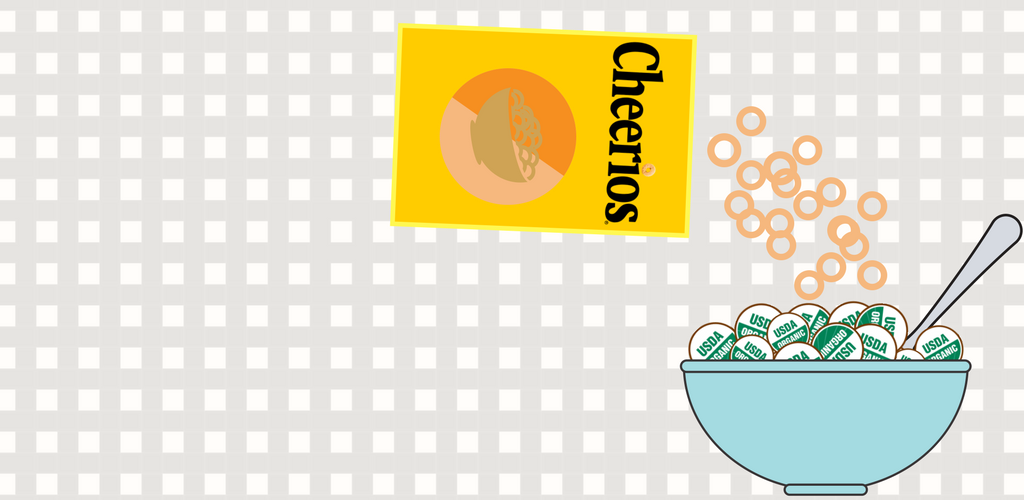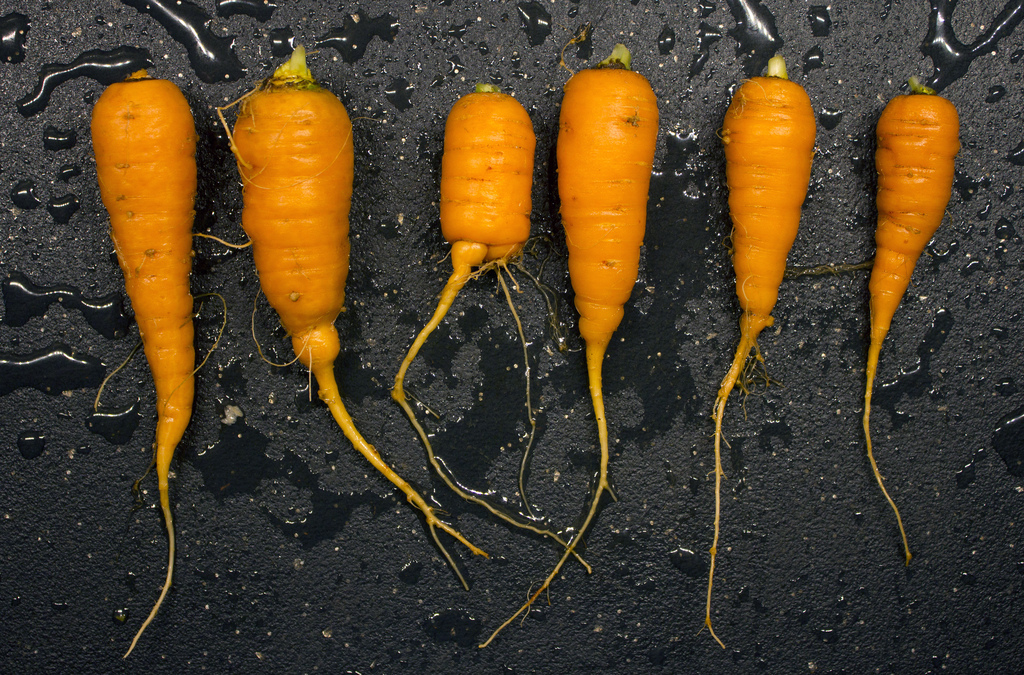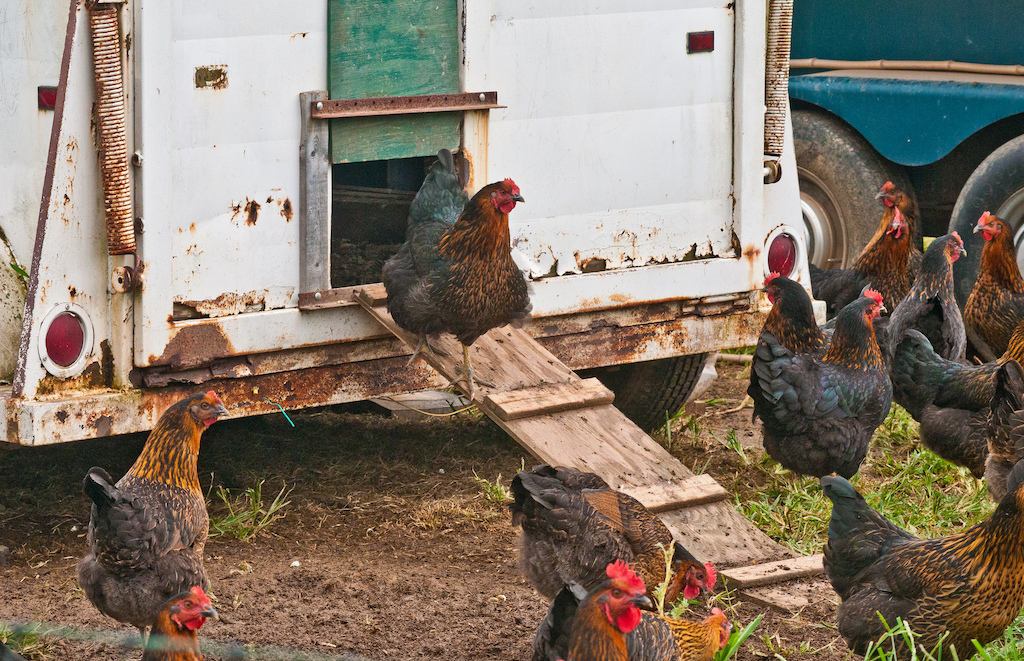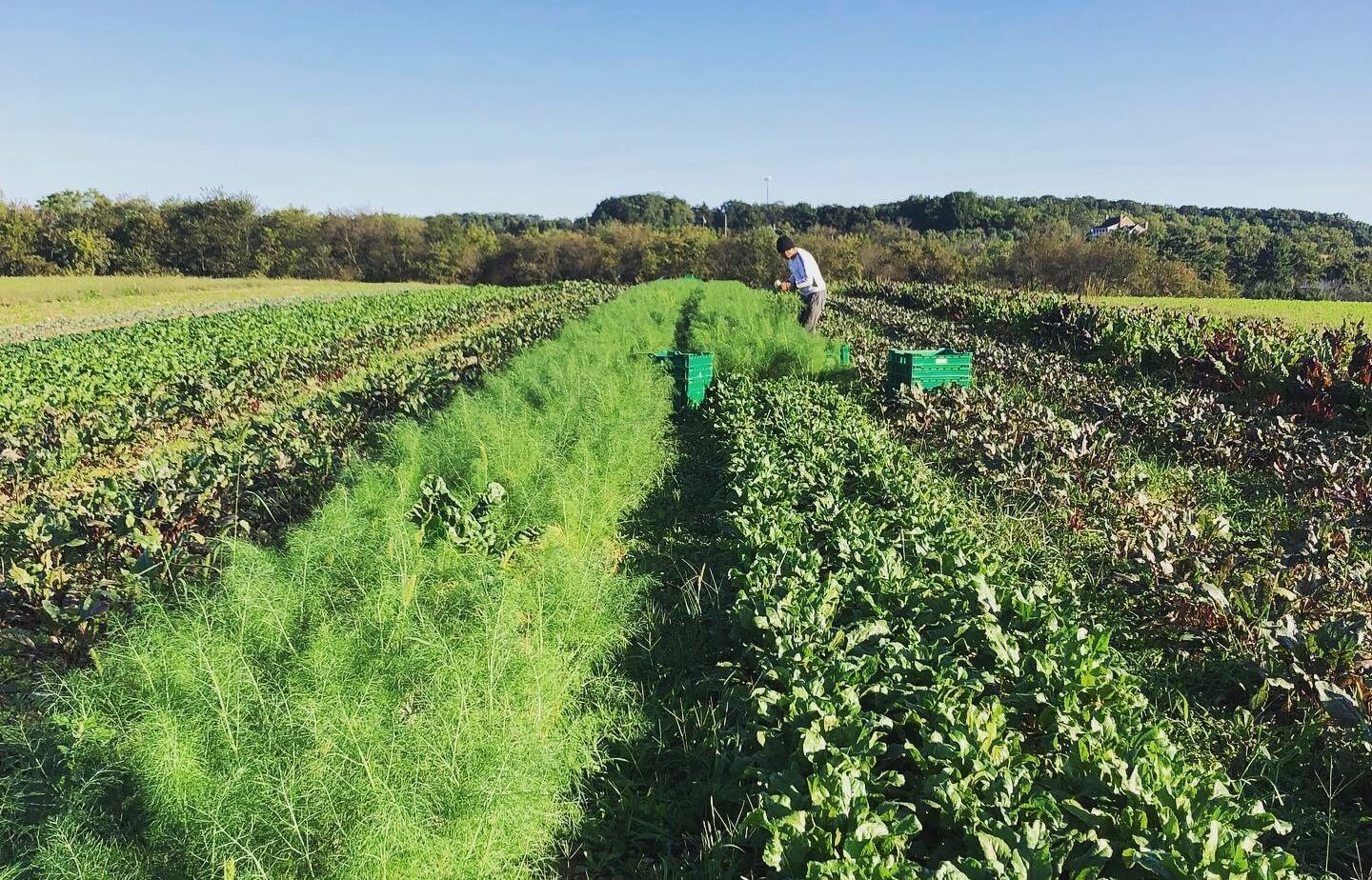
Taproot Farm
The organic market is booming, but farmers hoping to transition still struggle with the certification process.
When Ola Creston and George Brittenburg started Taproot Farm in 2009, they grew their produce according to USDA organic standards: It was important to them as producers and consumers to farm without the use of synthetic pesticides and fertilizers, with a focus on building and maintaining healthy soils. But it was six years until the couple went through the process of getting their 25 acres in Pennsylvania’s Berks County certified organic.
Pictured above, a worker harvests organic fennel at Taproot Farm in Shoemakersville, Pennsylvania.
“I think it took us longer because it has this bad rep of being a difficult thing to do, or expensive,” Creston says. But she found the record-keeping and costs associated with the process were much more manageable than she had been led to believe. Today, she sees certification as necessary in a direct market that’s become increasingly competitive.
“Whole Foods is our competition. I think that that label is something farmers need,” says Creston, whose business relies primarily on local farmers’ market sales and CSA memberships. “I realized that it’s very important to me as a consumer…that certification means a lot to me.”
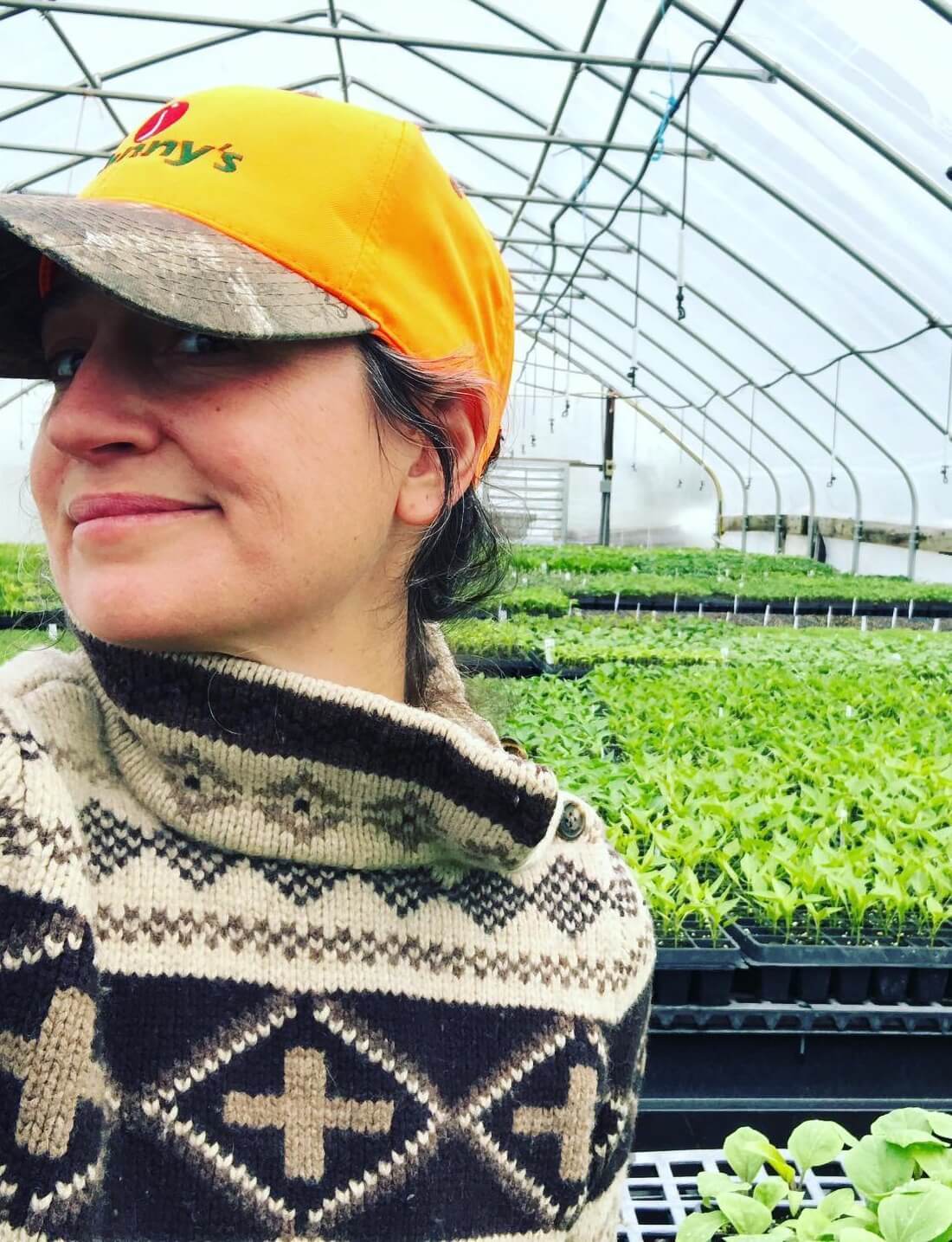
Taproot Farm
Farmer Ola Creston works in the nursery at Taproot Farm in Shoemakersville, Pennsylvania.
Creston runs one of the more than 18,500 certified organic farms in the United States counted by the U.S. Department of Agriculture in 2013. But 30 years after the Organic Foods Production Act began the process of defining a uniform set organic growing practices—and 18 years since those rules went into effect—only 0.6 percent of the country’s agricultural land is certified organic, despite the market for organic products growing to more than $50 billion in 2019.
With such a significant market opportunity at stake, why aren’t more farmers getting certified?
A small-scale diversified grower like Creston might not see the value in certification because she can market her product as local first and organically grown second. A 2014 Purdue University study found that “[d]irect marketing enables the producer to gain price premiums and consumer trust for his/her product without the paperwork and financial cost of certification.”
“If you’re a larger crop operation, where you haven’t necessarily had a great rotation for a long time and you haven’t been building up that soil health, you’re going to have a little more risk, some unanticipated issues.”
Comparing rates of organic certification in the U.S. with those in the European Union reveals a stark difference in how well the programs have encouraged growers to certify. The E.U., which subsidizes growers who go organic, had 13.4 million hectares, or 33.1 million acres, of certified organic and transitional farmland in 2018—7.5 percent of all agricultural land. While the five million certified organic acres tallied by USDA in 2016 don’t include transitional land, it’s clear that the country’s market-based approach hasn’t been as effective.
But there can be bigger hurdles to going organic. USDA’s standards exclude most of the synthetic pesticides, herbicides, and fertilizers conventional agriculture depends on, instead requiring naturally-derived substances and other tactics to achieve a similar effect: rotating in nitrogen-fixing cover crops to maintain soil fertility and health, fertilizing with compost and animal manure, incorporating beneficial insects for pest control, and managing weeds through cultivation or by hand. These standards must be followed for three years—the clock starts at the time of the last application of a prohibited substance—before growers can move forward with certification.
During that three-year window, producers must follow organic methods, but their products can’t command organic’s much-touted price premium, even though organic seed costs more than conventional and greener practices typically require additional labor.
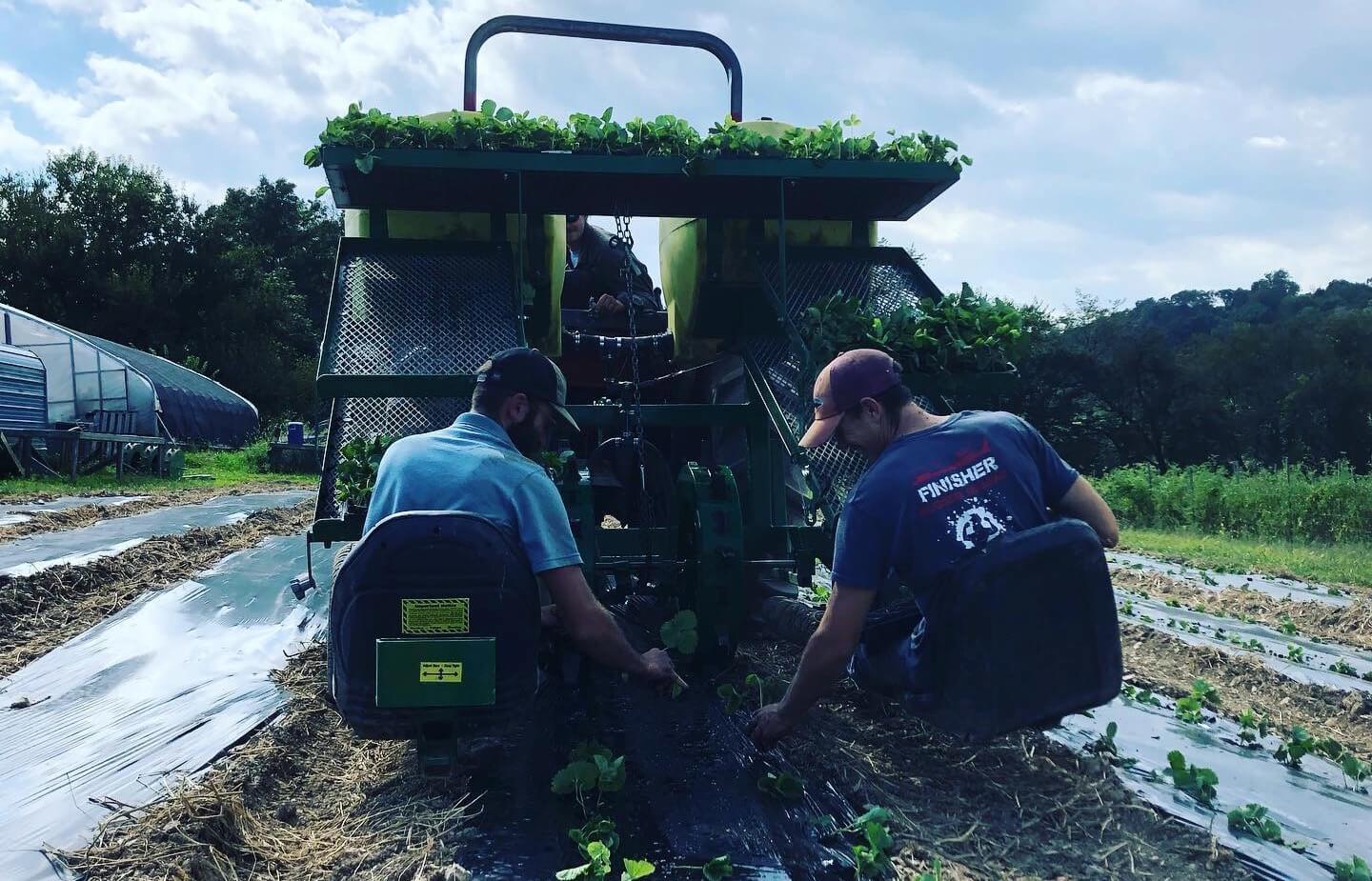
Workers plant organic strawberries at Taproot Farm in Shoemakersville, Pennsylvania.
Taproot Farm
“The biggest barrier is making it financially work through the three years of transition,” says Mae Petrehn, who works as an organic transition consultant in South Dakota for Dakota’s Best Seed. “If you’re a larger crop operation, where you haven’t necessarily had a great rotation for a long time and you haven’t been building up that soil health, you’re going to have a little more risk, some unanticipated issues.”
There are systemic barriers, too. Cash-strapped states struggle to support organic through educational initiatives or by offering certification, as a state-level survey by Berkeley Food Institute found in 2017. And the Organic Certification Cost Share Program, which once reimbursed farm operations for up to $750 of fees for obtaining or renewing certification, announced in August that the cost share would max out at only $500 going forward.
[Subscribe to our 2x-weekly newsletter and never miss a story.]
Organic products also require organic processors. As we’ve seen during the pandemic, facilities like grain mills, dairy processors, and slaughterhouses are highly centralized and slow to accommodate market changes or niche producers. There’s also a serious lack of organic inspectors comfortable with livestock, says Petrehn, who has experienced the dearth of meat processing with her own herd of lambs.
“There’s absolutely nowhere for me to take a trailer full of lambs that are certified organic…tracking and managing organic slaughter is a lot on top of a lot of requirements the plants already deal with.”
“It’s already a challenge for me to find a meat processor in-state that’s USDA inspected,” she says. “And there’s absolutely nowhere for me to take a trailer full of lambs that are certified organic…tracking and managing organic slaughter is a lot on top of a lot of requirements the plants already deal with.”
Despite the barriers to entry and higher costs associated with growing organically overall, the price premium certified organic crops command is a strong enticement. The sometimes drastic difference between prices for organic and conventional produce is obvious at the grocery store, and farmers earn significantly more for certified organic product. A comparison of terminal market prices in major cities shows this: On December 1, according to the USDA’s Agricultural Marketing Service, four-pound boxes of organic baby spinach were going for $13 to $14 in Boston, while conventional cases of the same size earned $10 to $11. In Los Angeles, the difference was starker, with 24-count cases of bunched flat-leaf organic spinach commanding $30 to $32 per case, while conventional earned nearly half that at $17 to $18 per case.
The same is true for commodity crops. 2015 USDA ERS report found that organic corn commanded a $2.83 per bushel price premium over conventional, netting producers an average of $0.56 to over $0.90 more per bushel even with the additional costs of organic practices and certification factored in. Even with fluctuations in both conventional and organic prices over the next few years, organic prices remained high, and in 2014 organic corn out-earned conventional by $9 to $10 per bushel. The gap in organic soybeans for both food and feed was even larger, with both commanding $30 per bushel in 2011-2012—double the price of conventional soybeans.
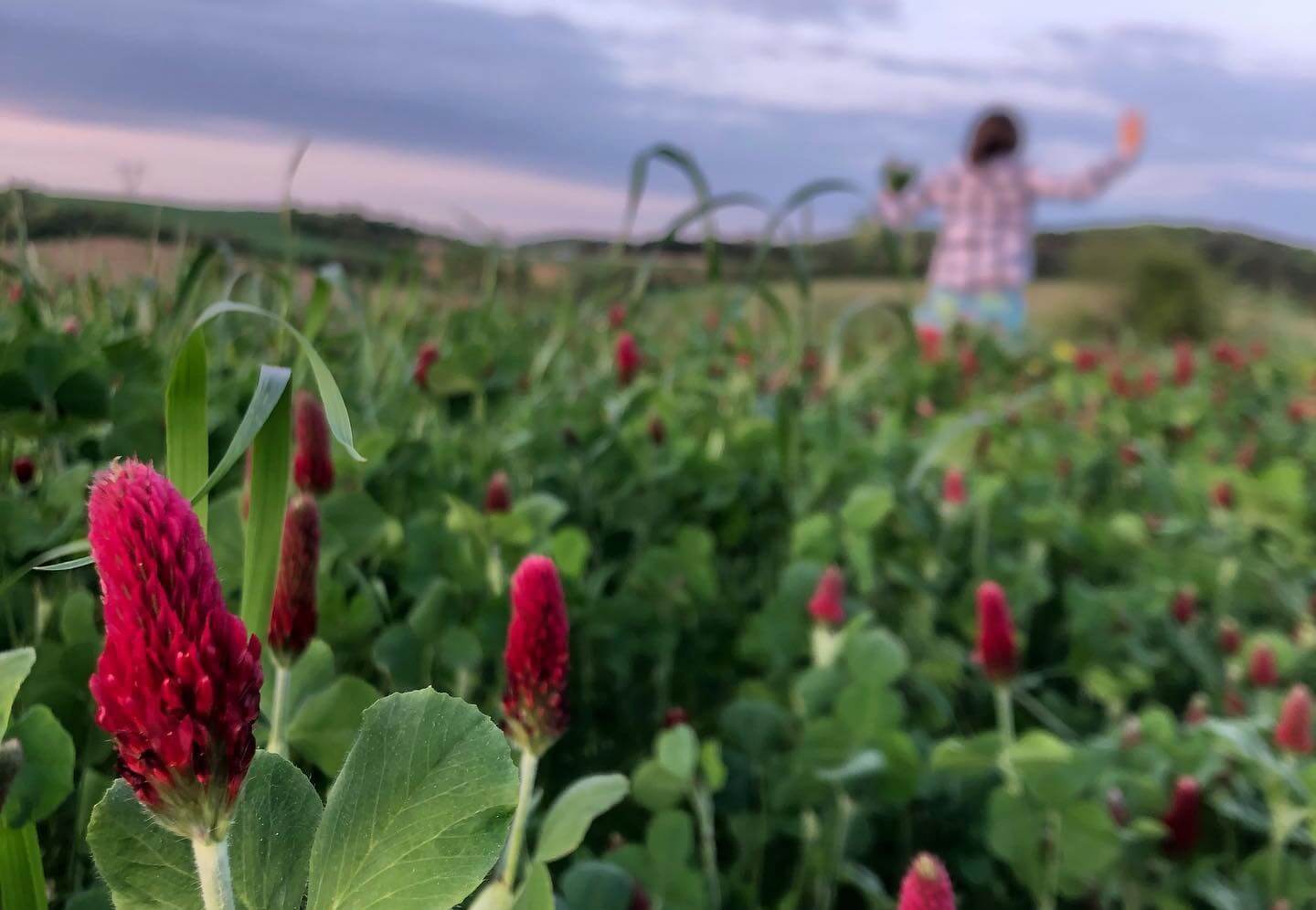
Cover crops like this red clover at Taproot Farm in Shoemakersville, Pennsylvania are used to build soil fertility on organic farms.
Taproot Farm
The Covid-19 pandemic may punctuate this gradual growth in certified organic farms, too. Retail sales of organic products surged in the early days of lockdown, with the Organic Produce Network reporting a year-over-year increase of 22.1 percent in dollars and 25 percent in volume between March 2019 and March 2020, outpacing conventional growth by 1.7 percent and 3.8 percent, respectively. The increase has been consistent through September, with growth in organic produce sales at 16 percent over 2019 numbers and conventional growth 10 percent over the previous year.
So where does an organic-curious producer start? Aside from polling growers in their networks who have completed the process, farmers looking to make the switch can get information, advice, and support about organic transition from a variety of sources: USDA offers its own organic transition resources online, as do organizations like SARE. A farmer could hire someone like Petrehn, who heads up Dakota’s Best’s Transition Toolkit Service, for a one-time consultation or a three-year support subscription. And the Rodale Institute, which has advocated for organic practices since it was founded in 1947, launched its Organic Crop Consulting from its Pennsylvania headquarters in March 2019.
Rodale’s program is designed to ease the process with hands-on, ongoing guidance. It’s free to producers in Pennsylvania and parts of the Midwest thanks to a $500,000 grant through the first-ever Pennsylvania Farm Bill, a $24 million investment in the state’s agriculture sector enacted in 2019.
“People come to organic for a variety of reasons, whether it’s ecological or family well-being.”
“Our goal as the consulting service is to transition as much acreage as possible to certified organic production,” said Sam Malriat, who heads up the program in Pennsylvania. So far, he says, most producers seeking their services have been grain growers—notably conventional no-till farmers already taking steps to support healthier soils who are ready to adopt no-till organic practices.
Michael Connor and Marcie Boettger have expanded into produce, hemp and livestock after years of growing hay and wheat at Sarah’s Way Farm in Gilbertsville, not far from Rodale in Berks County. For years, they struggled with conventional no-till’s use of herbicides to “burn down” a crop after harvest to avoid tilling the soil.
“We just didn’t feel right about that,” Connor says. “I listened to what they say, all the other farmers. ‘You don’t want to be organic, it costs $20,000 to do it,’ and I got discouraged.”
When the couple stumbled upon the Rodale program and found that the institute would fill out their organic paperwork for free, they were in. The initial certification process only cost them $1,200 before USDA’s cost share; now, they’re just waiting for their audit to be officially certified. “To me, it’s a no-brainer now, because people will pay more,” Connor says.
“It’s started out as a way to follow my dream of wanting to farm and seeing that it was economically more rewarding.”
To reach producers in the Midwest, where commodity corn and soybeans dominate, Rodale launched Organic Crop Consulting at its outpost in Marion, Iowa over the summer.
“People come to organic for a variety of reasons, whether it’s ecological or family well-being,” says Dr. Kristine Lang, who heads up the Midwest program. “I think it’s really important to start by understanding what’s motivating people and what’s bringing them to the table.” Farmers seek her out because they want to improve soil health, escape the conventional corn market (which has tanked during the pandemic), adopt healthier practices for their families, or ensure the longevity of their operation to pass down to their kids.
Farmer Jerome “Jake” Taylor III has sought support from Lang as he transitions 470 acres of rented farmland in Missouri, roughly a third each year. Taylor grew up in the conventional ag world—working for nearby farms, studying agriculture in college, working for John Deere, and now selling farm insurance as a day job. But when he launched his own farm in 2016, he knew he wanted to get certified from the start.
“It’s started out as a way to follow my dream of wanting to farm and seeing that it was economically more rewarding,” Taylor says. “I couldn’t get the numbers to work on the conventional side and make it worth the investment, so I made the decision that the route I was gonna go was organic.”
“You can say that I’m losing money, but we’ve taken the stance that we’re gonna do this, and we’re gonna get through it and get to the other side.”
Taylor notes the challenges he’s dealing with: organic requires more labor, and battling weeds and boosting soil fertility on formerly conventional land makes the first year of transition a difficult one. He had to convince property owners—despite the fact that organic practices would increase the value of their land—to rent to an organic farmer. And the prices he’s getting for his transitional corn and soybeans on the commodity market aren’t yet enough for the family to live on farming alone.
But the way Taylor sees it, he’s playing the long game. Like other farmers looking to break out of the conventional commodity mindset, he’s betting that a farming system that promotes soil health, doesn’t rely on expensive synthetic inputs, and fetches a higher price in a growing market will enable him one day to pass the farm on to his 15-year-old son, who’s already learning to cultivate with organic methods.
“You can say that I’m losing money, but we’ve taken the stance that we’re gonna do this, and we’re gonna get through it and get to the other side,” he says. “That’s just the way we think about it.”

